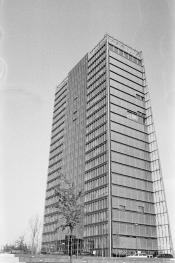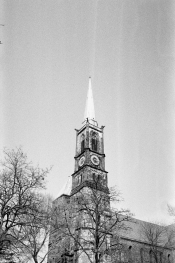How to meter properly
Light meters are calibrated to 18% gray. An old but still good metering method is to carry an 18% gray card and take your reading from it. In some circumstances, like copy work, additional adjustments have to be made. If you point your meter at a part of the subject which is approximately 18% gray and expose accordingly then the lighter and darker tones will fall into place properly. If the lighting is very high or very low in contrast then some additional adjustments might be needed. This all assumes that developing of the film and printing of the negatives are done with some care. There are four basic types of metering for reflected light: average, center weighted, spot and segmented. All of these willl work if used properly but each requires a different technique. With average metering you need to point the camera toward a part of the scene which is not too influenced by a very bright area like the sky or by a dark area like the foreground. With center weighted metering the same technique will work. With a spot meter you really need to find a middle tone or your exposure will be off. Segmented or patterned metering solves most but not all of these exposure problems. For a beginner, back lighting, like buildings against a bright sky, is difficult. Even with more advanced techniques of exposure and developing there are scenes which have too wide a range of brightness for all parts of a scene to be rendered properly. In these cases you will want to expose for the most important areas. I use avariety of cameras so I have to adjust my metering technique for each one. The Canon F-1 has 12 degree spot metering. This is the easiest system for me. I just need to meter off of a mid tone. If there is no mid tone then I will make an adjustment. With print film if the subject is bright white I will open up 2 stops. If the suject is very dark I may close down 1 stop. The Minolta X-700 has center weighted metering. When I use it with back lit situations I will tilt the camera down, hold the exposure lock button down, tilt back up and then shoot. The Pentax Spotmatic has average metering. This is the most difficult for me. In some situations I will tilt down for metering and at other times I will use the sunny 16 (1/film speed at f/16) rule. Some cameras have both spot and average or center weighted metering. The Mamiya 500DTL and 1000DTL switch back and forth between average and spot. The Olympus OM2000 switches back and forth between center weighted and spot. With a little practice and careful lab work you can learn how to make any metering system work for you.






